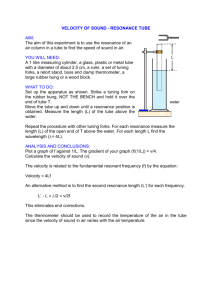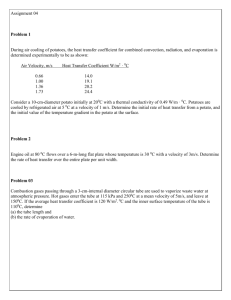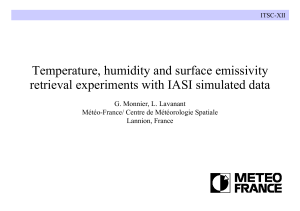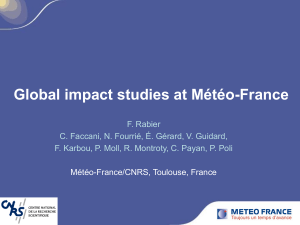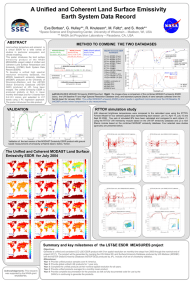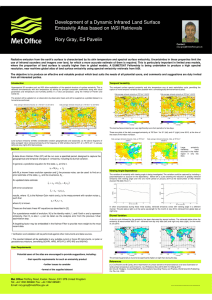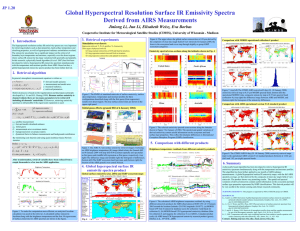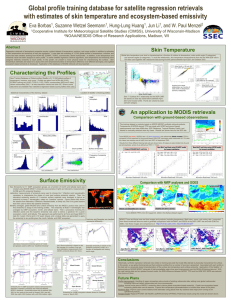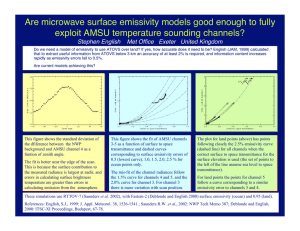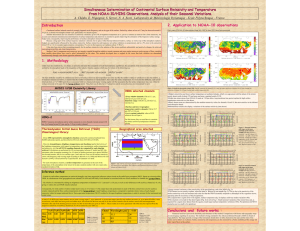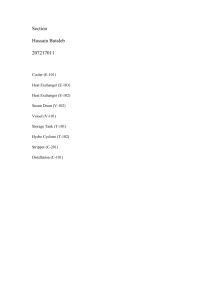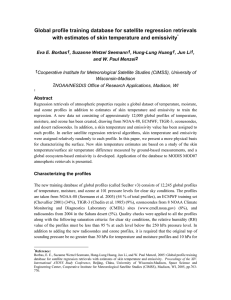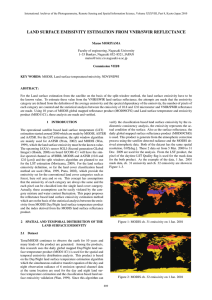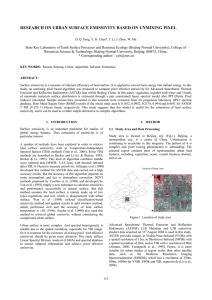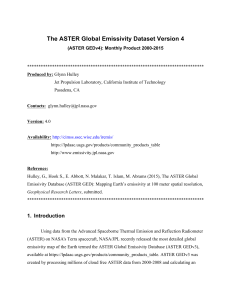Reg. No. : ,--I-----'---~ ' ' ' ' '_I_· --'---'----"----
advertisement
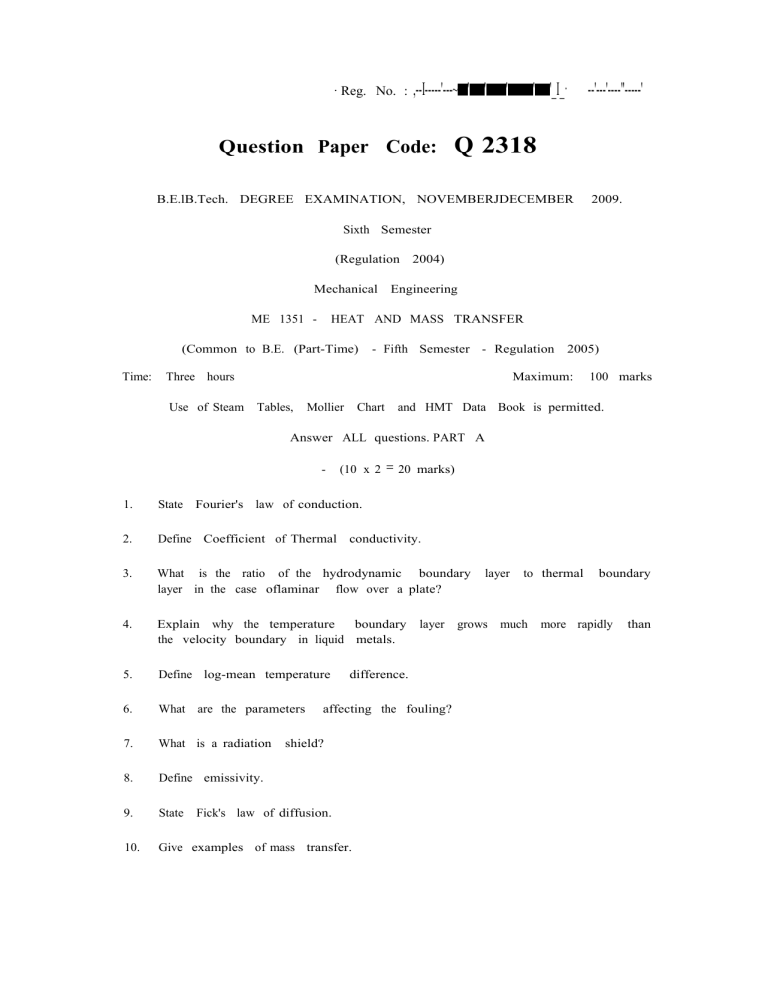
· Reg. No. : ,--I-----'---~ ' ' Question Paper Code: ' '_I_· ' --'---'----"-----' Q 2318 B.E.lB.Tech. DEGREE EXAMINATION, NOVEMBERJDECEMBER 2009. Sixth Semester (Regulation Mechanical ME 1351 - Engineering HEAT AND MASS TRANSFER (Common to B.E. (Part-Time) Time: 2004) - Fifth Semester - Regulation Three hours Use of Steam 2005) Maximum: Tables, Mollier Chart 100 marks and HMT Data Book is permitted. Answer ALL questions. PART A - (10 x 2 = 20 marks) 1. State Fourier's law of conduction. 2. Define Coefficient of Thermal 3. What is the ratio of the hydrodynamic boundary layer in the case oflaminar flow over a plate? 4. Explain why the temperature boundary the velocity boundary in liquid metals. 5. Define log-mean temperature 6. What are the parameters 7. What is a radiation 8. Define emissivity. 9. State 10. Give examples of mass transfer. conductivity. layer difference. affecting the fouling? shield? Fick's law of diffusion. layer grows to thermal much boundary more rapidly than PART B Ll.. (a) (5 x 16 = 80 marks) A hollow cylinder of 5cm ID and 10 cm OD, has an inner surface temperature of 200°C and an outer surface temperature of 100°C. If the thermal conductivity of the cylinder material is 70 W/mK. Determine the heat flow through the cylinder per unit length. Or (b) The wall of an oven consists of 3 layers of brick. Inside one is built of 20 em of fire bricks surrounded by 10 em of insulating brick and outside layer is binding bricks of 12 cm thick. The oven operates at 900°C, such that the outside surface of the oven is maintained at 60°C. Calculate (i) The heat loss per m2 in surface. (ii) The interfacial temperature. Given the thermal conductivity of fire brick, insulting are 1.2,0.26 and 0.68 respectively in W/moC 12. (a) brick and binding A steam pipe 20 em outside diameter runs horizontally in a room at 23°C.Take the outside surface temperature of pipe as 165°C. Determine the heat loss per meter length of the pipe. Or 13. (b) A sphere of diameter 25 mm at 200°C Calculate the convective heat loss. (a) Dry saturated steam at a pressure a vertical tube of height 1 m. The 117°C. Find the thickness of the transfer coefficient at a distance of IS immersed III air at 40°C. of 2.45 bar condenses on the surface of tube surface temperature is kept at condensate film and the local heat 0.2 m from the upper end of the tube. Or 14. (b) It is desired to use a shell and tube heat exchanger to heat 68 kg/min of water from 35°C to 75°C by using oil having a specific heat of 1.9 kJ/ kgK. The oil enters at a temperature of 110°C and flows at the rate of 170 kg/min. The water makes shell pass and the oil makes two tube passes. Calculate the area required for the heat exchangers assuming the overall heat transfer coefficient to be 300 W/m2K and specific heat of water to be 4.18 kJ/kgK. (a) A 40 mill diameter sphericalcontainer used for storing liquid nitrogen under atmospheric conditionsrboiling point = 90 K) is insulated by enclosing it concentrically within another sphere of 0.75m diameter. The intervening annular space between the spheres is completely evacuated and the material for both spheres has surface emissivity of 0.4. Make calculation for the radiant heat flow of the temperature if the outer container is 400 K. Or 2 Q 2318 15. (b) What will be the reduction in heat loss if a steel screen having an emissivity value of 0.6 on both sides is placed between the brick and steel setting? Also calculate the desired emissivity of the screen if radiation heat loss is 200 W/m2. (a) Determine the diffusion co-efficient of carbon tetrachloride into air if it evaporates at a rate of 0.012 gm/hr from a tube of 2 em dianieter and length 45 em. It evaporates at a temperature of O°C into dry air at a pressure of 760 mm of Hg. The vapour pressure of carbon tetrachloride at O°C is 33 mm of Hg. . Or (b) In a gas mixture consisting of H2 and 02, H2 moves with velocity of 1 m/s and its mole fraction is 0.2. Calculate (i) The mass and molar average velocities. (ii) The mass and molar fluxes across a plane which is (1) Stationary (2) Moving with mass-average (3) Moving with molar average velocity. 3 velocity Q2318



